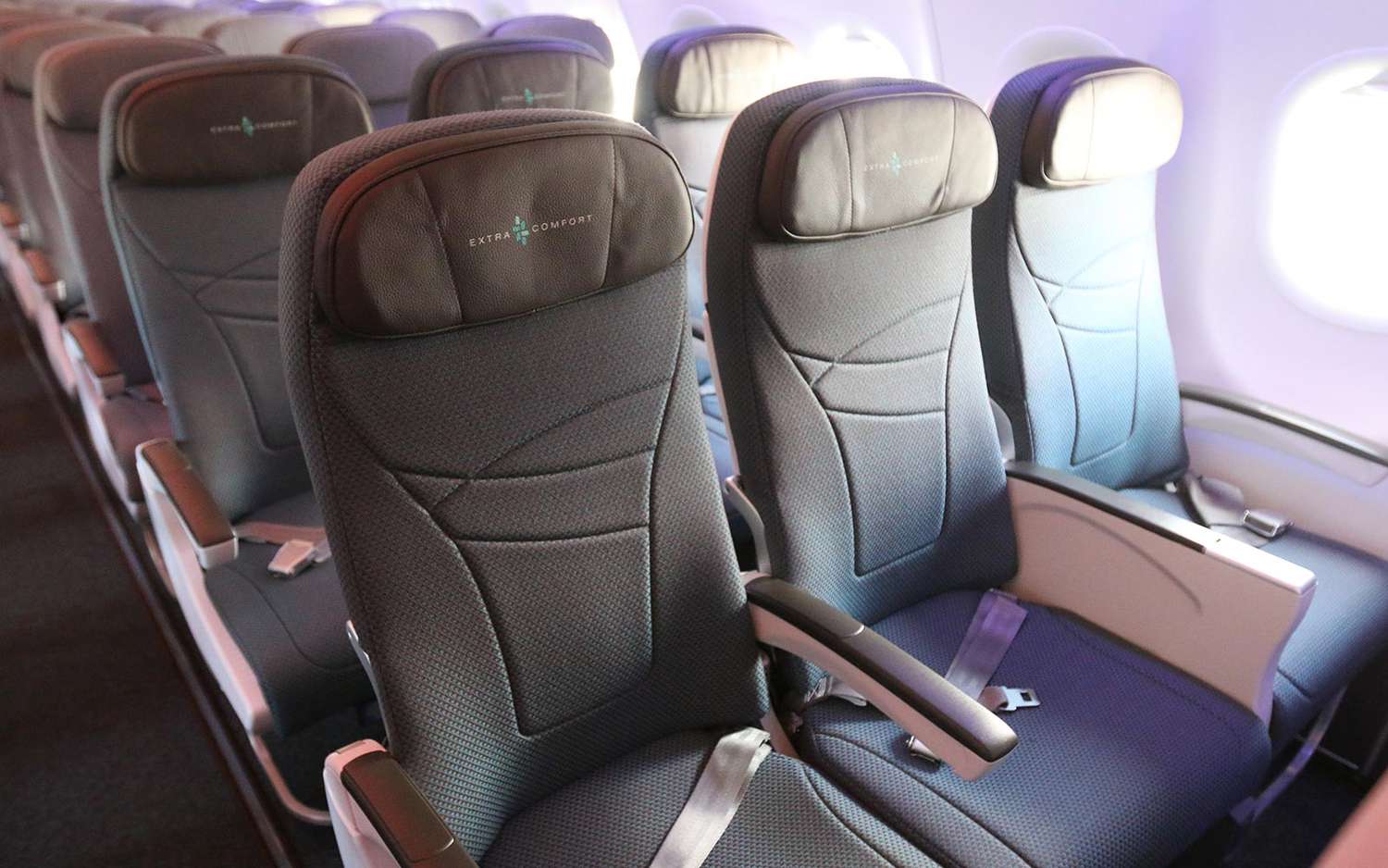
Ever wondered why some flights feel more cramped than others? The secret lies in airline seat pitch—the distance between one point on a seat and the same point on the seat in front of it. This measurement can make or break your flying experience. Airlines use seat pitch to balance passenger comfort with the number of seats they can fit on a plane. While some airlines offer generous legroom, others pack seats tightly to maximize profits. Understanding seat pitch can help you choose flights that offer a more comfortable journey. Ready to learn more? Buckle up as we dive into 17 intriguing facts about airline seat pitch!
Key Takeaways:
- Airline seat pitch is the distance between seats, affecting legroom. Historical changes show a trend of reduced pitch for more passengers. Different airlines offer varying pitches, impacting passenger comfort.
- Innovations like slimline seats and adjustable headrests improve comfort without increasing pitch. Passengers can find more legroom by choosing exit rows or bulkhead seats, and using seat selection tools.
What is Airline Seat Pitch?
Airline seat pitch refers to the distance between a point on one seat and the same point on the seat in front of it. This measurement gives passengers an idea of how much legroom they can expect during their flight. Let's explore some interesting facts about airline seat pitch.
-
Seat Pitch Measurement: Seat pitch is usually measured in inches. It ranges from 28 inches in some budget airlines to over 34 inches in premium economy classes.
-
Not the Same as Legroom: While seat pitch gives an idea of legroom, it isn't the same. Actual legroom can vary based on seat design and thickness.
Historical Changes in Seat Pitch
Over the years, airlines have adjusted seat pitch to balance passenger comfort and profitability. Here are some historical changes.
-
1950s and 1960s: In the early days of commercial aviation, seat pitch was often around 34-36 inches, providing ample legroom.
-
1980s: As air travel became more popular, airlines started reducing seat pitch to fit more passengers. It dropped to around 31-32 inches.
-
2000s: Budget airlines emerged, offering lower fares but also reducing seat pitch to as low as 28 inches.
Comparing Airlines
Different airlines offer varying seat pitches, even within the same class. Here's a comparison.
-
Budget Airlines: Airlines like Spirit and Ryanair often have seat pitches around 28-30 inches.
-
Legacy Carriers: American, Delta, and United typically offer 30-32 inches in economy class.
-
Premium Economy: Airlines like British Airways and Virgin Atlantic offer 34-38 inches in their premium economy sections.
Impact on Passenger Comfort
Seat pitch significantly affects passenger comfort, especially on long-haul flights. Let's see how.
-
Long-Haul Flights: On flights over 8 hours, a seat pitch of at least 32 inches is recommended for better comfort.
-
Short-Haul Flights: For flights under 3 hours, a seat pitch of 28-30 inches is usually sufficient.
-
Health Concerns: Limited legroom can lead to discomfort and even health issues like deep vein thrombosis (DVT).
Innovations in Seat Design
Airlines and manufacturers are constantly innovating to improve comfort without sacrificing seat pitch. Here are some advancements.
-
Slimline Seats: These seats have thinner backs, allowing more legroom without increasing seat pitch.
-
Reclining Mechanisms: Newer seats offer better reclining options, enhancing comfort even with limited pitch.
-
Adjustable Headrests: Many airlines now offer adjustable headrests, providing better neck support.
Tips for Finding More Legroom
Passengers can take steps to find more legroom, even in economy class. Here are some tips.
-
Exit Rows: Seats in exit rows often have more legroom, but may come with additional responsibilities.
-
Bulkhead Seats: These seats, located at the front of a section, usually offer extra space.
-
Seat Selection Tools: Websites like SeatGuru provide detailed seat maps, helping passengers choose seats with more legroom.
Final Thoughts on Airline Seat Pitch
Airline seat pitch isn't just a number; it can make or break your travel experience. Knowing the seat pitch helps you choose the right airline for comfort, especially on long flights. Airlines vary widely, with some offering as little as 28 inches and others providing up to 34 inches or more in economy class. Premium economy and business classes usually offer even more space, making a big difference for those who need extra legroom.
When booking, always check the seat pitch to avoid cramped conditions. Websites like SeatGuru can be handy for comparing different airlines. Remember, a few extra inches can mean the difference between a comfortable flight and a cramped one. So next time you book a flight, keep seat pitch in mind for a more pleasant journey. Happy flying!
Frequently Asked Questions
Was this page helpful?
Our commitment to delivering trustworthy and engaging content is at the heart of what we do. Each fact on our site is contributed by real users like you, bringing a wealth of diverse insights and information. To ensure the highest standards of accuracy and reliability, our dedicated editors meticulously review each submission. This process guarantees that the facts we share are not only fascinating but also credible. Trust in our commitment to quality and authenticity as you explore and learn with us.


